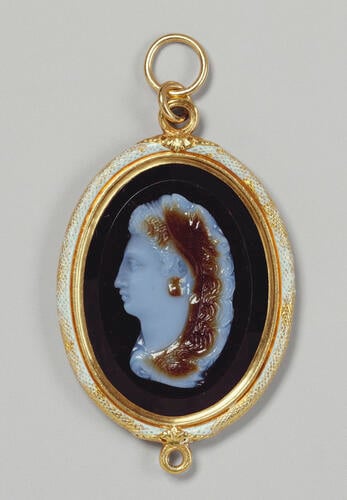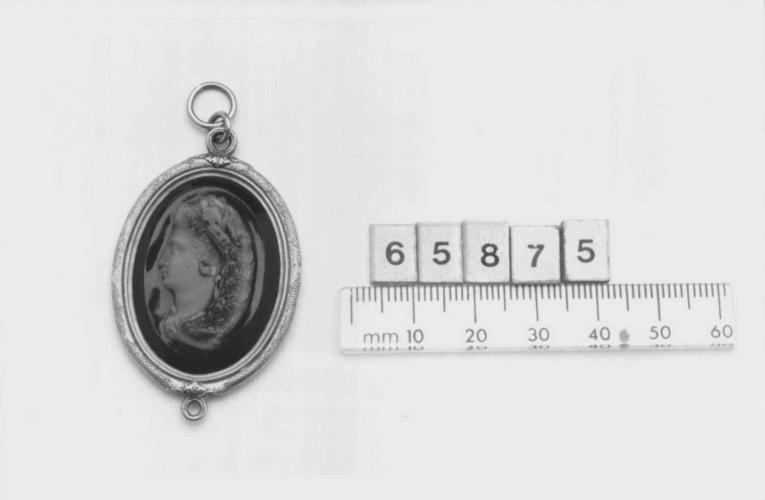-
1 of 253523 objects
Omphale and Hercules Cameo: 16th c.; Mount: late 16th/early 17th c.
Sardonyx: brown, white and brown, reverse brown; white enamelled gold mount with two translucent red and green enamel rosettes, suspension loops and rings at top and bottom | 7.25 x 4.5 cm (with fittings) | RCIN 65875
-
Obverse: cameo head of Omphale, Queen of the Kingdom of Lydia, in profile to the left, with the lion skin over her head. Framed by a bevelled edge.
Reverse: cameo head of the warrior and hero, Hercules, husband of Omphale; bearded and laureate, in profile to the right. The lion skin is visible along the neckline. Cut in the dark layer of the stone in ‘sunken’ low relief and framed by a bevelled edge.
Both sides were cut from a single stone. The exceptional quality can only point to an engraver of Milanese origin or Milanese training, perhaps one of the French engravers trained by Matteo dal Nassaro when in Paris. Fine cameos, especially in sardonyx, seem to have been produced in the early 17th century, as witnessed by the gems from the French royal collection, now in the Cabinet des Médailles, in Paris.
The representation of Omphale is derived from an ancient image of the young Hercules from the collection of Lorenzo de' Medici (1449-1492) and is often rendered with a representation of Hercules.
Text adapted from Ancient and Modern Gems and Jewels in the Collection of Her Majesty The Queen, London, 2008Provenance
First recorded in the Royal Collection in 1872.
-
Creator(s)
(nationality) -
Medium and techniques
Sardonyx: brown, white and brown, reverse brown; white enamelled gold mount with two translucent red and green enamel rosettes, suspension loops and rings at top and bottom
Measurements
7.25 x 4.5 cm (with fittings)
4.8 x 3.0 cm (cameo)
Category
Place of Production
Italy


